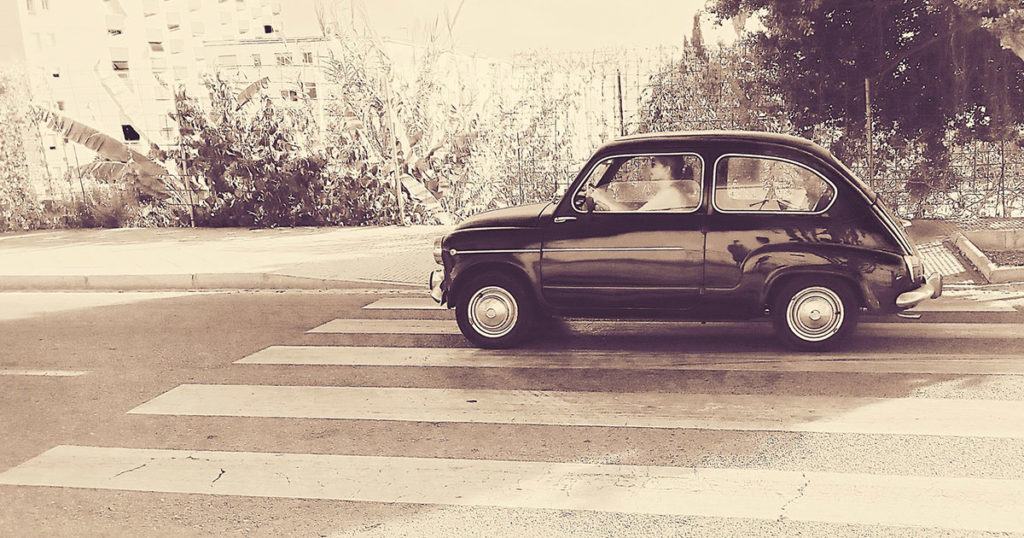
Occasionally here in Spain I see a small, humpbacked car, a SEAT 600, an old car by any standards and the first car for many Spanish families. That makes it something like a Spanish Model T, though its shape is more like a VW Bug but without the swoopy lines—more like a homely cousin to the Bug, suggestive of a turtle on wheels, or a toad. Or a small pugnacious bulldog, compact yet bulging and lumpy. It was affectionately called pelotilla, little ball, due to its shape, or ombligo, navel, because everyone had one. It’s a classic, this country’s proto-car, and, as the car that motorized Spain, a symbol of the Spanish miracle of the 1960s. How can you not love it? It’s Little Toot to America’s larger, older, grander Big Toot.
The first 600 rolled out of a plant in Barcelona in 1957, and it really is a tiny thing, no longer than it is high and only half as wide as today’s cars. It looks like an ornament, or a piece of candy, that you could easily hold in your palm, very different from the cars of the time in the States, those big long hefty vehicles you’d never even imagine clutching with just one hand. No, those cars, a Chevy Impala or a Buick Riviera or Ford Galaxie, are loaves, not buns, a platter, not a plate.
Long before those cars of the ’60s were the long, open or convertible cars my grandmother saw as a girl in the 1920s. She lived in Upstate New York, and sometimes such a car passed through town. When it did, it caught people’s attention. One summer day when my grandmother was about nine and out on the streets with her older brother, Web, a big car came through. A touring car, she called it when she told me the story, the kind with a soft top and big wide seats front and back. This car rolled through town, its occupants on the way to a summer watering spot, Saratoga perhaps, enjoying the breeze, enjoying the drive.
Web had recently had his tonsils out, and the doctor had let him keep them. That doesn’t happen anymore. A law would prohibit a doctor from returning any part of your body after removing it, but back then you could save these excised body parts, and on the sideboard at the children’s home already sat a jar with the three fingers floating in formaldehyde that their father had lost in a sawmill accident with a drunken employee. Maybe Web had wanted to add his tonsils, also in a jar, to the dining room collection but his mother had told him no, and he was going to bury them. But then a better use presented itself.
I picture the boy sitting on the curb, tonsils in a jar, his sister at his side, the long summer day ahead of them, the shiny car coming toward them, a few flies buzzing, the sun hot, the car bright, the top down, the idea forming in the boy’s mind.
He did exactly what one both fears and hopes—he emptied the jar into his hand and heaved the tonsils through the air and into the car.
What did the occupants do? What did they say? What did they think of the slimy, fleshy mass landing in their laps? I like to think there was someone in that grand car with a sense of the absurd who could laugh, but I picture that better from someone in an upstart SEAT 600, not stately but scrappy, not gliding on through a small town on a slow summer day but scooting about to spot the culprit. There wasn’t one, just an empty street, not a soul to be seen, a few flies buzzing, leaves barely lifting in a breeze, and the tinkle of laughter from just out of sight.

